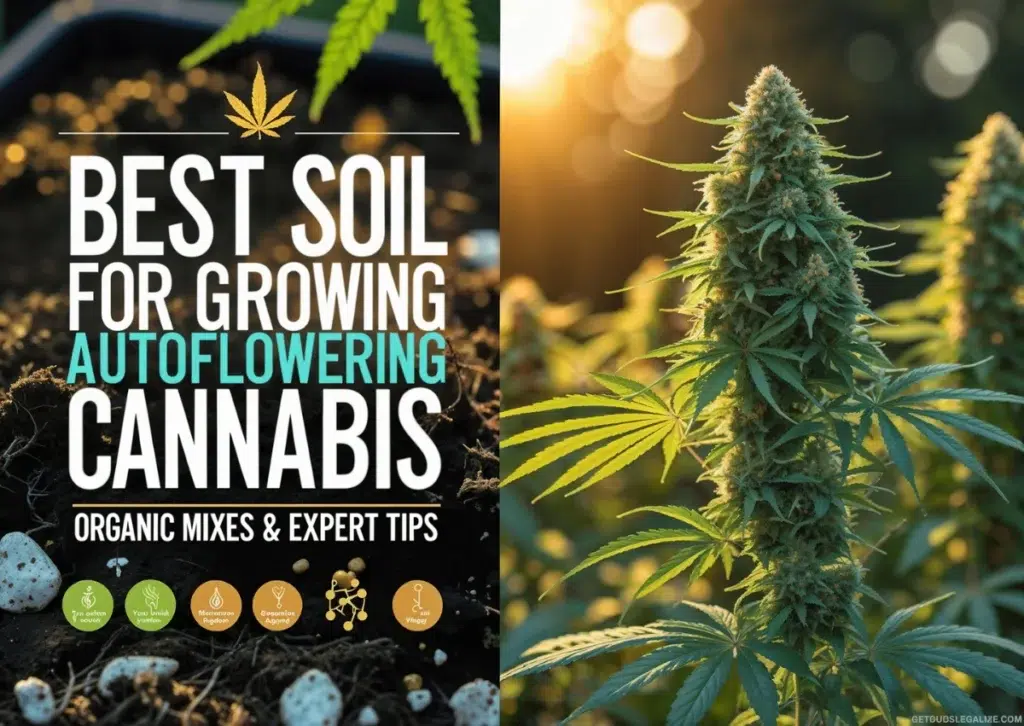How to Defoliate Cannabis Plants for Bigger Yields
Cannabis defoliation is a technique that involves removing some of the leaves from your plants to improve their growth, health, and yield. Defoliation can help your plants get more light, air, and nutrients, as well as prevent pests and diseases.
However, defoliation is not a simple or risk-free process. It requires careful planning, timing, and execution to avoid stressing or damaging your plants. In this blog post, we will explain what cannabis defoliation is, why you should consider doing it, when is the best time to do it, and how to do it properly.
What is Cannabis Defoliation?
The defoliation technique is the practice of pruning or trimming some of the leaves from your plants of cannabis. The main purpose of plant defoliation is to optimize the light distribution and penetration in your growing space. Cannabis leaves are essential for photosynthesis, but they can also block or reflect light from reaching other parts of the plant. By removing some of the leaves, you can expose more budsites and lower branches to direct light, which can increase their growth and potency.
Another benefit of defoliation is that it can improve the airflow and humidity in your growing space. Cannabis leaves can create a dense canopy that traps heat and moisture, which can create a favorable environment for mold, mildew, and pests. By thinning out some of the leaves, you can reduce the risk of these problems and keep your plants healthy and happy.
Defoliation can also help your plants use their resources more efficiently. The plants of cannabis spend a lot of energy producing and maintaining leaves, especially large fan leaves. By removing some of the unnecessary or unproductive leaves, you can redirect that energy to other parts of the plant, such as the buds. This can result in bigger and denser flowers with higher resin production.
Why Should Growers Defoliate Their Plants?
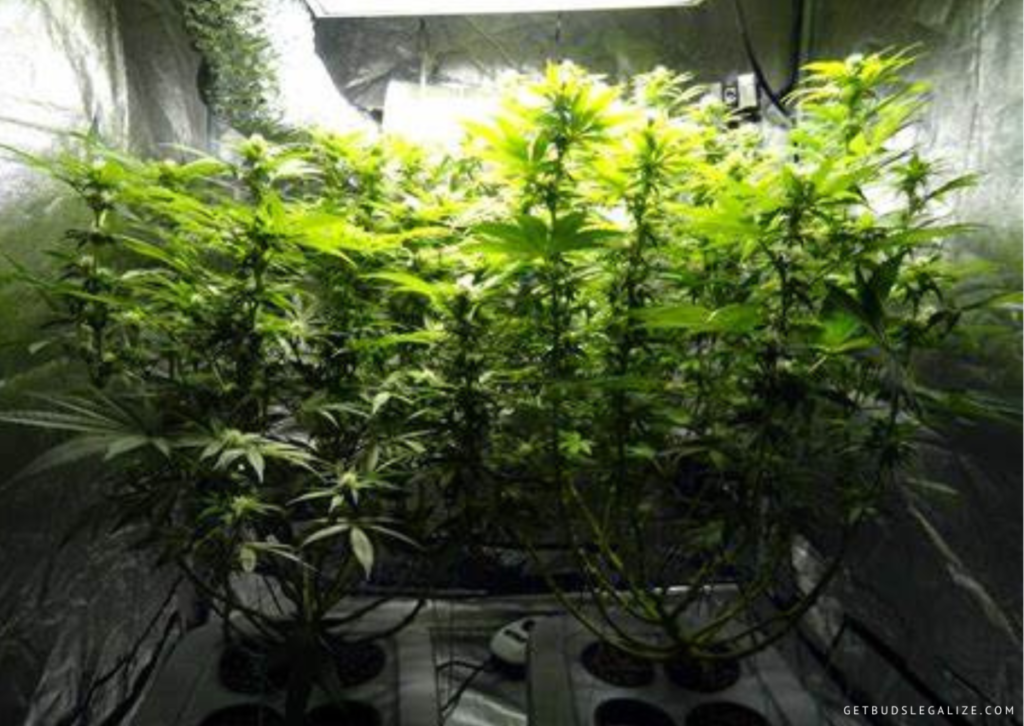
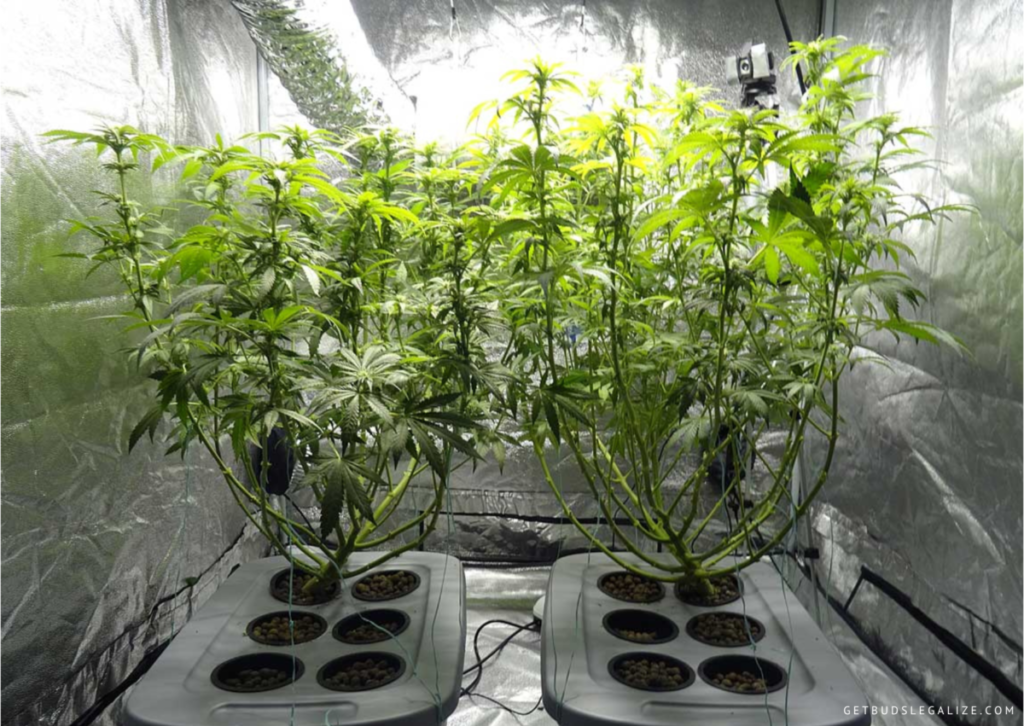
Defoliation is not a mandatory or essential technique for plant growth. Many growers prefer to let their plants grow naturally without any interference. However, defoliation can offer some advantages for growers who want to maximize their yields and quality in a limited space.
Defoliation can help you achieve a more even canopy in your grow space, which can increase your light efficiency and coverage. This can be especially useful for indoor growers that use artificial lighting, such as LEDs or HPS lamps in grow rooms. These lights have a limited range and intensity, so they may not reach all parts of your plants equally. By defoliating some of the leaves that block or shade other parts of your plants, you can ensure that all your buds get enough light to develop fully.
Defoliation can also help you control the height and shape of your plants, which can be beneficial for indoor growers who have limited vertical space. Plants of cannabis tend to stretch during the flowering stage, which can cause them to outgrow their space or get too close to the lights. By defoliating some of the upper leaves during the vegetative stage, you can slow down or limit the vertical growth of your plants and encourage them to grow more laterally instead.
Defoliation can also enhance the quality and potency of your buds by increasing their exposure to light and air. Light is among the most important factors for bud development and resin production. By removing some of the leaves that cover or surround your buds, you can increase their trichome density and cannabinoid content.
Air is also important for bud health and aroma. By removing some of the leaves that create a humid and stagnant environment around your buds, you can prevent mold and mildew from forming and preserve their terpene profile.
When Is the Best Time to Defoliate?
Defoliation can be done at different stages of the plant’s life cycle, but it requires careful planning and execution to avoid stressing or damaging the plant.
Choosing the best time to defoliate cannabis depends on your goals and growing conditions. Some general guidelines are:
- Do it during the vegetative phase to promote branching and bushiness. This can help you create a more even canopy and increase the number of bud sites. You can defoliate once or twice during this stage, but avoid doing it too close to the flowering.
- Do it during the flowering phase to increase light penetration and air circulation to the buds. This can help you prevent mold and mildew, as well as boost resin production and bud density. You can defoliate once or twice during this stage, but avoid doing it too early or too late in flowering.
- Do it selectively and moderately. Only remove leaves that are blocking light to the buds, hindering air flow, or showing signs of disease or damage. Do not remove more than 20% of the leaves at a time, and give your plant enough time to recover between defoliations.
- Do it with care and precision. Use clean and sharp scissors or a razor to cut the leaves close to the stem. Avoid tearing or ripping the leaves, as this can cause wounds that may invite pests or infections.
Defoliating Cannabis Plants in the Vegetative Stage

The vegetative phase is the period when cannabis plants grow their stems, branches, and leaves, preparing for the flowering stage. Defoliating in this stage can help to shape the plants and create a more even canopy, as well as to remove any damaged, diseased, or yellowing leaves that may hinder the growth.
The best time to defoliate in the vegetative phase is when your plants have at least 4-6 nodes (sets of leaves) and are healthy and vigorous. You should avoid defoliating too early or too often, as this can stunt the growth and delay the flowering. You should also avoid defoliating right before switching to the flowering light cycle, as this can shock the plants and cause them to hermaphrodite (produce male flowers).
When Should You Not Defoliate Cannabis in Veg?
Defoliation is not always beneficial and can sometimes harm your plants if done incorrectly. Here are some situations when you should not defoliate cannabis in veg:
- If your plants are weak, sick, or stressed, this can worsen their condition and make them more susceptible to pests and diseases.
- If your environment is too hot, dry, or humid, defoliation could cause your plants to lose too much water or invite mold and mildew.
- if they are already well-shaped and have good light penetration and airflow, as this can reduce their leaf surface area and photosynthesis capacity.
- If you are inexperienced or unsure about how to defoliate properly, you could end up damaging your plants or removing too many leaves.
Defoliate of Cannabis Plants in the Flowering Stage
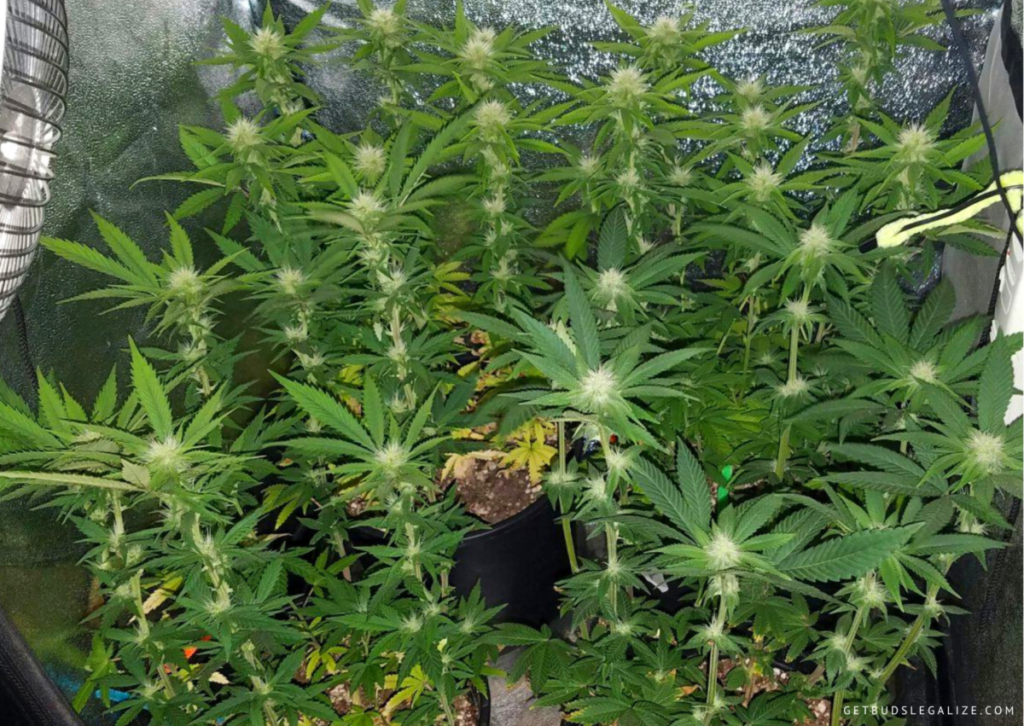
The flowering phase is the period when marijuana plants produce buds and resin. Defoliating in this stage can help to expose more bud sites to light and increase their size and quality. However, it can also reduce the plant’s ability to produce sugars and hormones that are essential for bud development.
The best time to defoliate cannabis in flowering is during the first 2-3 weeks of bloom when the buds are still forming and stretching. You should avoid defoliating after week 4 of bloom, as this can stress the plants and reduce their potency and aroma.
When Should You Not Defoliate Cannabis in Bloom?
Here are some situations when you should not defoliate your plants in flowering:
- If your plants are already stressed or unhealthy, defoliation can add more stress and slow their recovery. You should only defoliate healthy plants that can handle the shock.
- If your plants are close to harvest, defoliation can reduce the quality and quantity of your buds. You should avoid defoliating in the last few weeks of flowering, as this is when your buds are developing the most resin and terpenes.
- If your plants are growing in a low-humidity environment, defoliation can increase the risk of bud rot and mold. You should maintain a relative humidity of 40-50% during flowering and avoid removing too many leaves that help regulate moisture levels.
- If your plants are growing in a small space with limited light, defoliation can reduce their yield potential. You should only defoliate if you have enough light intensity and coverage to reach all the budsites on your plants.
How to Defoliate Cannabis Properly

Defoliation is not a one-size-fits-all technique. It depends on several factors, such as the strain, the growth stage, the environment, and your personal preference. However, there are some general guidelines that can help you defoliate your plants effectively and safely.
Choose the Right Strain:
Not all cannabis strains respond well to defoliation. Some strains are naturally bushy and dense, while others are more airy and sparse. Generally speaking, indica-dominant strains tend to benefit more from defoliation than sativa-dominant strains, as they have more leaves that can block the light. However, this is not a hard rule, and you should always observe how your plants react to defoliation before applying it extensively.
Choose the Right Time:
Defoliation can be done at different stages of the plant’s life cycle, but it’s usually best to do it during vegetative or early flowering. During the vegetative phase, you can remove some of the large fan leaves that grow near the main stem and branches to open up space for lateral growth and light penetration.
Choose the Right Amount:
Defoliation is a delicate balance between removing enough leaves to improve light penetration and airflow and leaving enough leaves to support photosynthesis and energy production.
Choose the Right Tools:
To defoliate, you’ll need sterile pruning shears or sharp scissors. Make sure to disinfect your tools before and after each use to prevent the spreading of diseases or pests. Cut the leaves as close to the stem as possible without damaging it. Dispose of the cut leaves properly and avoid leaving them on the soil or near the plants.
How to Defoliate In the Veg Stage
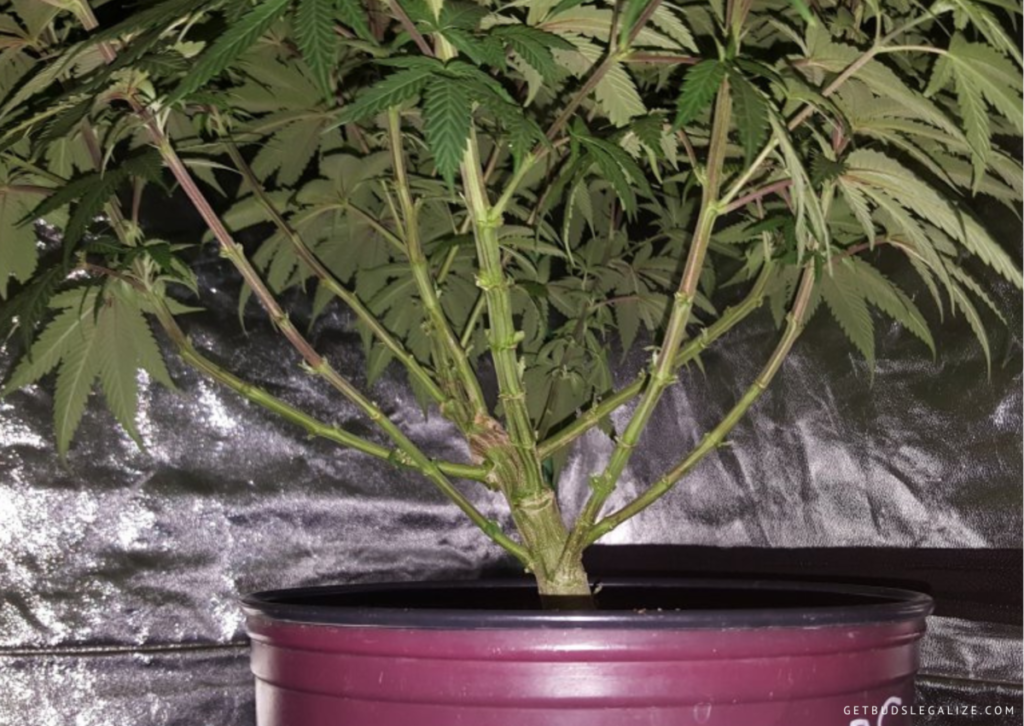
In the vegetative phase, defoliation can be done just before switching the plants to bloom. The goal is to remove large, hand-sized fan leaves that block light from reaching lower nodes.
Start by cutting away the leaves near the bottom of the plant, sometimes called “lollipopping”. Then, move up the plant and remove any leaves that overlap or create dense pockets of foliage.
Use a sharp pair of scissors or a razor to make clean cuts and avoid tearing the leaves. Do not remove more than 20% of the leaves at a time and leave at least a week between defoliation sessions.
How to Defoliate in the Flowering Stage
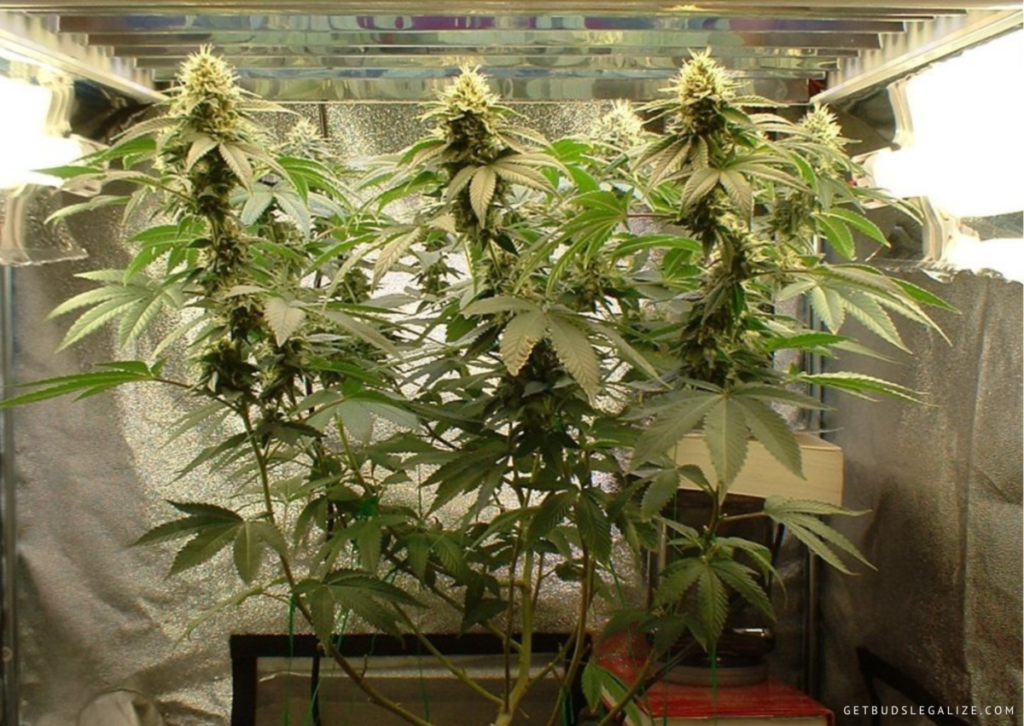
In flowering, the defoliation can be done again around 3 weeks into the bloom stage. The goal is to expose the buds to more light and air and prevent mold or pests from forming.
Again, start by removing the lower leaves that receive little light and contribute little to bud production. Then, remove any leaves that cover or touch the buds, especially in the top colas.
Be careful not to damage or stress the buds or branches and avoid defoliating after week 6 of flowering, as this can reduce resin production and potency.
Here are Some Tips to Avoid Making Mistakes
Here are some tips on how to defoliate cannabis correctly:
- Use clean and sharp scissors or pruning shears to make clean cuts and avoid infections.
- Start with removing any dead, damaged, or diseased leaves that may attract pests or pathogens.
- Remove any large fan leaves that block light or airflow to the lower branches or bud sites.
- Remove any leaves that touch or overlap with other leaves or buds, creating moisture or humidity pockets.
- Remove any leaves that grow from the main stem or from below the first node, as they usually do not contribute much to photosynthesis or bud production.
- Remove only up to 20% of the total leaf mass at a time, leaving enough foliage for the plant to recover and perform its functions.
- Defoliate gradually over several days or weeks, rather than all at once, to allow the plant to adapt and heal.
- Monitor the plant’s reaction after each defoliation session and adjust accordingly.
- Water and feed the plant well after defoliation to help it recover and grow.
Bottom Line
In summary, defoliating can be a useful technique for improving light penetration, airflow, and bud development in your plants of cannabis. However, it should be done with caution and moderation, depending on the stage of growth and health of the plant. By following a few simple guidelines, you can achieve optimal results without compromising their health and yield.
Cannabis Defoliation - FAQs
Defoliation is the process of removing leaves from a plant to improve light penetration, airflow, resin production, and yield. However, it can also have some risks, such as causing stress, sunburn, pests, and disease. Defoliation can be done during vegetative and flowering but requires careful timing and technique.
Here are some reasons why you might want to avoid defoliating your plants of cannabis:
- It can stress your plants and make them more vulnerable to pests, diseases, and environmental factors. Removing leaves can also reduce the plant’s ability to produce energy through photosynthesis and affect its hormonal balance.
- It can reduce the quality and potency of your buds. Leaves contain cannabinoids, terpenes, and flavonoids that contribute to the aroma, flavor, and effects of your cannabis. Removing too many leaves can result in less resinous and less flavorful buds.
- It can be time-consuming and labor-intensive. Depending on the size and number of your plants, defoliation can take hours or even days to complete. You also need to be careful not to damage the stems, branches, or buds while removing the leaves.
- It can be unnecessary or counterproductive. Some cannabis strains are naturally adapted to grow with dense foliage and do not benefit from defoliation. In fact, defoliation can reduce their yield and quality. Other strains may respond well to defoliation in some stages of growth but not in others.
Defoliation is not a simple or straightforward technique that works for all plants. It takes skill, experience, and careful observation to determine if and when you can or not.
If you are unsure about defoliating your plants, it may be best to leave them alone and let them grow naturally.
Defoliation should not be done too frequently or excessively, as it can stress the plant and reduce its health. The optimal number of times to defoliate depends on several factors, such as the strain, the growing environment, and the stage of growth.
Generally, it is recommended to defoliate once or twice during the vegetative phase, and once or twice during the flowering phase. Defoliating more than four times in total can be harmful to the plant and affect its quality and potency.
There is no definitive answer to how often you can defoliate in veg, as different strains and growing conditions may require different approaches. However, a general rule of thumb is to defoliate no more than once every two weeks and to remove no more than 20% of the leaves at a time. This will allow the plant to recover and grow back stronger without compromising its health or yield.
As a general rule, defoliation should be done sparingly and gradually during the flowering phase, as the plant has less time and resources to recover from the stress. A good time to defoliate is right before the switch to the 12/12 light cycle when the plant is about to enter the flowering. This will help to remove any unnecessary foliage that might block light or airflow to the lower buds.
Another good time to defoliate is around week 3 of flowering when the plant has finished its stretch and has established its bud sites. This will help to expose the buds to more light and increase their size and density. However, avoid removing too many leaves at once, as this can shock the plant and slow its growth. Aim to remove no more than 20% of the leaves per session, and focus on the large leaves that are covering the buds or blocking light.
After week 3 of flowering, defoliation should be avoided or minimized, as the plant is focusing on producing resin and terpenes, and any stress can affect its quality and potency. Only remove leaves that are yellowing, dying, or infected by pests or diseases, as they can harm the plant or spread infections. Also, avoid cutting any leaves that are close to the buds, as they can provide essential nutrients and protection to them.
Defoliation should be done carefully and sparingly, as it can also stress the plant and reduce its vigor.
The amount of defoliation depends on the strain, the environment, and the preference of the grower. Generally speaking, less is more when it comes to defoliation.
A good rule of thumb is to remove no more than 20% of the leaves at a time and to wait at least two weeks between sessions. In the vegetative phase, it is advisable to focus on removing large leaves that block light from lower branches or create too much humidity.
In the flowering phase, it is advisable to focus on removing leaves that cover or touch the buds, or that show signs of yellowing or damage. Defoliation should be avoided in the last two weeks of flowering, as it can affect the quality and potency of the final product.
Generally, it is recommended to defoliate your plants during the vegetative and early flowering phase, but not after week 3 of flowering. Defoliating too late can interfere with bud development and lower the potency and aroma of the final product.
Therefore, it is important to monitor the plants closely and only remove leaves that are blocking light or airflow, and avoid cutting off any buds or bud sites.
The general consensus among growers is that defoliation should be done sparingly and only during the early stages of flowering, preferably before the third week. This is because weed plants need enough time to recover from the stress and use their energy for bud production.
Defoliating too late can cause more harm than good, as the plant will divert its resources to healing the wounds and producing new leaves instead of buds. Additionally, defoliating too late can increase the risk of mold, pests, and diseases, as the plant will have fewer defenses and more exposed wounds.
Therefore, it is advisable to avoid defoliating flowering cannabis after the third week of bloom, unless there is a serious problem with light penetration or airflow that cannot be solved by other means.
Defoliation is a powerful tool that can improve the quality and quantity of your harvest, but it should be used with caution and moderation.
This is a common question among cannabis growers who want to optimize their yield and quality. There is no definitive answer, as different methods may suit different strains, environments, and preferences.
Trimming back leaves is the process of removing some of the big leaves that are blocking light from reaching the buds. This can improve airflow, reduce humidity and prevent mold. It can also increase the potency and density of the buds by exposing them to more light. However, trimming too much can stress the plant and reduce its photosynthesis and growth.
Defoliation is the process of removing most or all of the big leaves from the plant, usually during the flowering phase. This can create more space for the buds to develop and receive light, resulting in bigger and heavier harvests. However, defoliation is a risky technique that can severely damage or kill the plant if done incorrectly or excessively.
The best way to find out what works for you is to experiment with different methods and observe the results. Some growers prefer to trim lightly throughout the vegetative and flowering phases, while others prefer to defoliate heavily once or twice during flowering. Some growers avoid both methods and let the plant grow naturally. Ultimately, it depends on your goals, skills, and preferences.
There is no definitive answer to when you should completely defoliate a plant, as it depends on the type of plant, the growing conditions, and the desired outcome. Some general guidelines are:
- Defoliate only healthy and vigorous plants that can tolerate the stress and recover quickly.
- Only during the active growing season, when the plant can produce new leaves faster.
- Only when the environmental conditions are favorable, such as moderate temperature, humidity, and light.
- Only partially at a time, leaving some leaves on the plant to maintain its energy and balance.
- Only when necessary, and avoid doing it too frequently or excessively.
Completely defoliating a plant is a drastic measure that should be reserved for special cases, such as bonsai training, indoor gardening, or extreme pest infestation. In these cases, you should follow the specific instructions for your plant species and situation, and monitor the plant closely for signs of recovery or distress.
If you are unsure about whether or how to do it on your plants, consult an expert or a reliable source of information before proceeding.












